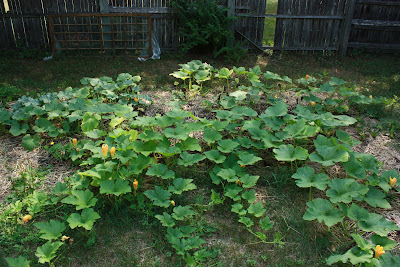It makes what the company Monsanto is doing all the more evil. If anyone is unfamiliar, Monsanto is a chemical company that began genetically modifying and patenting seeds. Monsanto thought that since they modified their "roundup ready" seeds to resist their patented weed killer, "roundup" they had the right to also patent those seeds. Weeds are a huge problem in our little home gardens but in industrial mono agriculture it is magnified by the thousands. It is simply too time consuming, costly and laborious to weed hundreds of acres. Monsanto made the farmers believe that they had the answer to all their problems. Farms bought the seeds, bought the roundup and basically made a deal with the devil.
Once you were contracted to Monsanto and their products you lost the ability to perform one of the most timeless rituals in agriculture: seed saving. Monsanto made you buy new seeds each year since these new GM crops could only produce one year. The seeds were duds. Farmers traded in their mechanical threshers for good and were roped into a never ending cycle of seed and weed killing chemical purchases.
That however, is not even the worst part; now the neighbors got involved. If you had a field next door to a farmer under contract with Monsanto and you decided to forgo the company and live with some weeds and save your seeds you could also face some trouble it turns out. Say a mighty wind blew some of your neighbors Monsanto seeds into your field and Monsanto came by and tested a few of your crops, as they had a tendency to do, (rest assured if you weren't on the Monsanto train you were red flagged.) the next thing you know you are getting dragged to court by a billion dollar company for patent infringement and they will try to take your farm away from you. These struggling farms already at a disadvantage just did not have the spare time and energy and extra money to spend on litigation. Some people lost generation old farms. They lost their livelihood. So that a few people could get MEGA rich. Sound familiar? Finally in 2009 Monsanto has come under scrutiny from the government and there are actual investigations launched. Let's hope some things change.
Here is a little excerpt from Wikipedia if you were still feeling a tinge of sympathy for the devil:
The 1940s saw Monsanto become a leading manufacturer of plastics, including polystyrene, and synthetic fibers. Since then, it has remained one of the top 10 US chemical companies. Other major products have included the herbicides 2,4,5-T, DDT, and Agent Orange used primarily during the Vietnam War as a defoliant agent (later proven to be highly carcinogenic to any who come into contact with the solution), the artificial sweetener aspartame (NutraSweet), bovine somatotropin (bovine growth hormone (BST)), and PCBs.[5] Also in this decade, Monsanto operated the Dayton Project, and later Mound Laboratories in Miamisburg, Ohio, for the Manhattan Project, the development of the first nuclear weapons and, after 1947, the Atomic Energy Commission.
yeah.
So that is why it is all the more important to buy organic non-GM food and save your seeds! Today I saved some seeds from our batch of sungold tomatoes, heirloom variety tomatoes, cucumbers, patty pan squash and zucchini.
Most of us know that membrane that surrounds tomato seeds. It is there to buy the seed some time, namely the winter, before the seed begins to germinate and sprout a new plant. If all goes well the membrane dissolves at just the right time in the spring and the circle continues.
In order to save those seeds we need to separate the seeds from the membrane and halt the natural progression by drying the seeds and storing them in a cool dry place until we are ready to use them. The best way to separate the membrane is to let the seeds ferment in a jar or cup. After about a week the seeds drop to the bottom of the container and the membrane separates and grows a lovely mold on it. All you have to do is wait for that to happen and then carefully scrape off the membrane and wash off your seeds over a strainer. Then lay them out to dry on a plate with a rag or paper towel. After a few weeks the seeds should be dry enough to scrape into a little envelop and stored away in a cool dry place for next year.
Cucumbers are very similar to tomatoes except you should really let the cucumbers rot before you try to take out the seeds. The cukes should be vine ripened, big, yellow and smushy.
All the squashes are pretty easy: you just scrape them seeds out, wash them off to remove any of the vegetable matter as it can cause mold, dry them on a plate with a rag or paper towel for a couple of weeks, label them and store them away.
You don't even need to have your own plants to do this. As long as your veggies are organic and hopefully not some hybrid, which can be hard to tell sometimes but hey, try it anyway, just supplement with some locally purchased seeds as well and see what happens. It is immensely satisfying!!






























